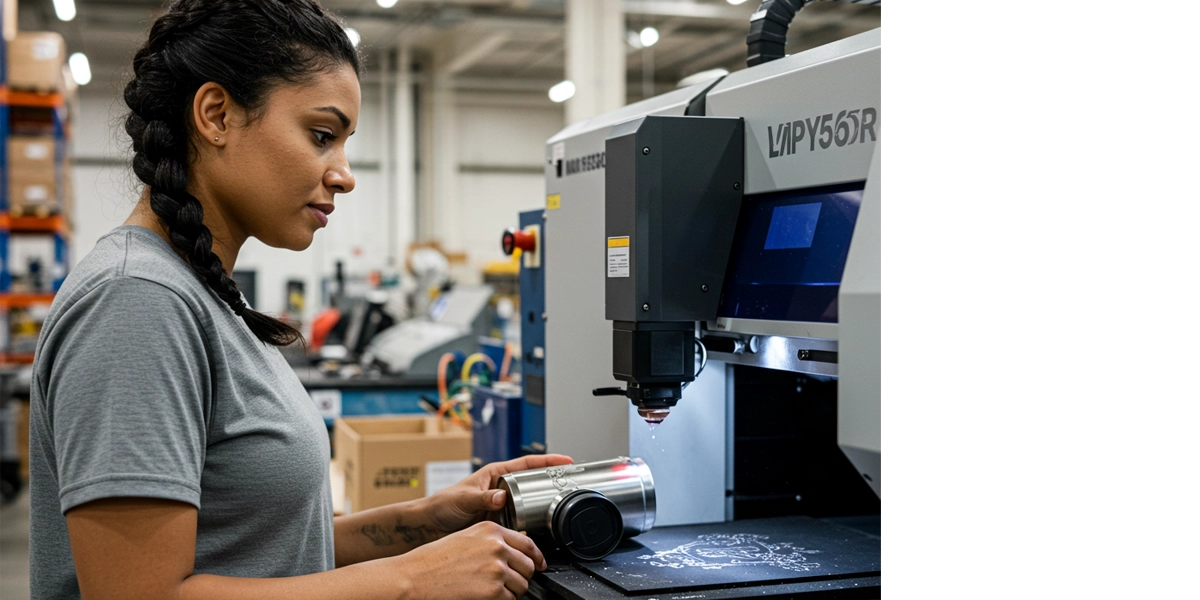In This Article:
An efficient warehouse-picking process is a must for any ecommerce brand. Warehouse picking refers to how items are chosen from inventory when fulfilling orders. It directly affects how quickly and accurately orders are processed.
Why is this important? The answer is simple – the faster and more accurately orders can be processed, the smoother your ecommerce operation runs and the lower the expenses. Mistakes during picking can result in wrong orders, returns, and worst of all – unhappy customers.
Avoiding common errors is easier said than done but by using our warehouse-picking strategies, you can easily improve speed and accuracy during picking. However, if you are ready to hand off your logistics operations to the professionals, we can help!
We have over 30 years of ecommerce fulfillment experience, with three domestic fulfillment centers and a dedicated ecommerce customer support center. We can deliver fast, two-day, or even overnight shipping in the US, and our warehouse picking strategies and processes are a huge part of our success. In the meantime, learn how to improve warehouse picking speed and accuracy using our 9 go-to strategies.
1. Analyzing Product Velocity
Understanding the concept of product velocity is crucial for optimizing warehouse-picking strategies. This metric gauges the speed at which items move through your inventory, ultimately influencing their ideal storage locations for maximum accessibility.
ABC Analysis
One way to streamline your approach is by implementing the ABC analysis method. This technique categorizes products into three distinct groups—A, B, and C—based on their demand frequency.
- Category A: High-velocity items that constitute the majority of your sales. These products should be stored in easily accessible locations to expedite the picking process.
- Category B: Items with moderate demand, requiring a strategic balance between accessibility and storage efficiency.
- Category C: Slow-moving items that can be stored away from prime locations due to their infrequent retrieval.
XYZ Analysis
To refine your strategy further, you can employ the XYZ analysis. This analysis aims to identify products with consistent (X), fluctuating (Y), or unpredictable (Z) demand patterns.
Focusing on X-category items is vital as these products exhibit predictable and steady sales patterns, enabling a rapid retrieval process.
Maintaining accurate inventory data is the backbone for both ABC and XYZ analyses. These analytical approaches empower pickers to locate products efficiently by providing them with real-time information. This optimization of picker routes significantly reduces the time spent searching for items, thereby directly impacting your bottom line.
2. Organizing Inventory Strategically with Slotting Techniques
The efficiency of a warehouse heavily depends on its layout and organization. Logical product placement and reducing travel time for pickers are two key aspects to consider. Cross-Docking streamlines the flow of goods by sidestepping unnecessary handling and picking stages. This approach helps your business achieve faster delivery times, increase customer satisfaction, and reduce storage costs.
An equally effective alternative approach to product storage is zone slotting. This strategy involves assigning specific areas in the warehouse for different product categories. The aim is to facilitate order assembly and speed up the picking process. For instance, products with high demand can be placed in a zone easily accessible to pickers, thus reducing their travel time.
Both strategies require careful planning, but improve order accuracy and make it easier to be a faster warehouse picker. Effective slotting techniques contribute to a well-organized inventory, boosting speed and accuracy in ecommerce order fulfillment.
3. Establishing Efficient Picking Routes
Efficient picking routes are critical to optimizing travel paths, preventing warehouse congestion, and improving order-picking accuracy. By mapping out direct and strategic routes, pickers can move swiftly and confidently, reducing wasted time and increasing throughput. The two best methodologies are zone-based order and wave picking:
Zone-Based Order Picking
By assigning pickers to specific zones within the warehouse, each associate becomes an expert in locating and handling the items within their area. This specialized approach enhances speed as pickers navigate familiar territory with ease.
Advantages of Zone-Based Order Picking:
- Minimizes cross-aisle traffic
- Reduces picker learning curve
- Increases productivity through familiarity
How to Start Using Zone-Based Order Picking:
- Allocate each picker to a designated zone where they pick all the items for an order within that zone.
- Pass the order off to another zone via a conveyor belt or cart.
Wave Picking
Wave picking groups orders into waves, allowing batch-picking associates to collect items for multiple orders simultaneously.
Advantages of Wave Picking:
- Maximizes the use of labor and equipment
- Enables efficient handling of high-volume orders
- Increases pick density
How to Start Using Wave Picking:
- Schedule waves based on factors like shipping deadlines or product type.
- Coordinate picking activities to align with these groupings.
By integrating these strategies, businesses can dramatically sharpen their order fulfillment precision and improve warehouse-picking speed and accuracy.
4. Using Technology for Accurate Picks
Barcode scanning plays a crucial role in improving order-picking accuracy. It helps to significantly reduce errors by allowing instant validation of picked items. With barcode scanners, pickers can quickly verify if they have selected the correct item, ensuring that every order is accurate before it moves further in the fulfillment process.
Another game-changing technology in the picking process is Voice Picking, which is part of automation technologies:
- Pickers can work hands-free as they receive voice instructions, making their tasks much easier.
- Voice picking eliminates the need for paper-based instructions, saving time on manual checks and reducing pick errors.
By combining these technologies, you can ensure that every stage of your fulfillment process is precise, resulting in an unmatched level of customer satisfaction.
5. Embracing Automation in the Picking Process
In the world of warehouse operations, using smart automation is crucial for improving efficiency. Conveyor belts and shuttles are helpful in reducing manual tasks and ensuring faster and more accurate order fulfillment. However, the real game-changer is mobile robots.
Automated Guided Vehicles (AGVs) have completely transformed the picking process. These self-driving machines assist pickers by carrying heavy or bulky items, reducing physical strain and the risk of injury while also speeding up operations.
Here are some advantages of using AGVs:
- Efficiency: AGVs can work continuously without getting tired, leading to increased productivity.
- Accuracy: AGVs follow predetermined paths, minimizing mistakes in handling items.
- Flexibility: AGVs can be reprogrammed as needed to adapt to changes in warehouse layout or picking strategy.
By incorporating AGVs into your warehouse picking methods, you position your business as an industry leader in innovation, paving the way for fast, precise, and cost-effective order fulfillment.
6. Reducing Errors with Paperless Order Picking Methods
Transitioning to paperless order picking is a game-changer for warehouse operations. By using digital pick lists and handheld devices, warehouses can significantly reduce the risk of human error from manually entering data. These technologies make the picking process more efficient by:
- Instantly updating inventory levels to ensure accurate stock information
- Guiding pickers through the most efficient routes
- Verifying picks in real-time to reduce search times and improve accuracy
7. Find and Pack Products Quicker with Pick-to-Light Systems
Pick-to-light systems are essential for modern warehouse picking strategies. They show pickers exactly where items are located using visual cues like lights or LED displays, which:
- Minimize time spent searching for items
- Reduce mis-picks by clearly indicating pick locations
- Allow for quick training of new staff, as the system is intuitive and easy to understand
Implementing these paperless solutions can lead to smoother workflows with fewer warehouse errors, resulting in faster and more precise order fulfillment. These systems integrate with warehouse management software to provide real-time data on inventory levels and picking progress. Warehouse managers can use the data to guide their efforts and adapt to changes in order volume or inventory issues.
8. Implementing Quality Control Measures in Batch Picking
Batch picking is a powerful strategy used in warehouses to speed up order fulfillment. It involves picking similar orders at the same time, which helps reduce travel time and increase picker productivity. Here’s why it’s beneficial:
- Efficiency: Batch picking streamlines the process by grouping related orders together, saving time and resources by minimizing unnecessary movement within the warehouse.
- Cost-effectiveness: With reduced travel time and higher pick rates, batch picking can lead to significant cost savings.
Implementing these quality control measures in your batch-picking process can enhance efficiency, reduce errors, and ultimately contribute to more streamlined operations in your warehouse.
9. Order Consolidation
Order consolidation is an effective measure that involves checking ordered items before picking them. Here’s how it works:
- Instead of checking items individually after they are picked, order consolidation verifies the correctness of picked items at the batch level before further processing occurs.
- By doing so, you can catch any errors or discrepancies early on and prevent them from being shipped to customers.
Order consolidation offers the following benefits:
- Reduce Errors: Checking items at the batch level significantly decreases the chance of shipping incorrect items to customers.
- Boost Customer Satisfaction: Accurate orders result in satisfied customers, improving your brand’s reputation and increasing the likelihood of repeat business.
By implementing order consolidation as part of your batch-picking process, you can effectively minimize errors and ensure that only the correct items are shipped to customers.
Partner with OWD for Accurate, Fast, and Affordable Order Fulfillment
Effective warehouse-picking strategies are essential for improving speed and accuracy in ecommerce order fulfillment. By implementing the 9 methods outlined above, businesses can significantly streamline their operations, reduce errors, and increase customer satisfaction.
If you want to leave fulfillment to the experts, learn more about a partnership with OWD. We offer comprehensive order fulfillment services for D2C and B2B businesses. With One World Direct’s expertise in fulfillment process optimization, you gain:
- Personalized-to-Consumer (P2C) Fulfillment Options: Our free P2C plugin integrates directly with your shopping cart so you can start offering product personalization for your products, including custom engravings, embroidery, direct-to-object printing, and greeting cards.
- Global Reach with Local Precision: Benefit from our impressive international shipping capabilities while ensuring rapid delivery with three strategically located fulfillment centers in the US. Using all three locations, we can ship domestically in two business days with ground shipping and even offer same-day shipping.
- Technology-Driven Efficiency: Leveraging our proprietary WMS gives you maximum visibility into your fulfillment efforts so you can reduce costs and ship smarter.
- Customer Support Excellence: Take advantage of our call center services, featuring US-based agents that can handle all your customer support through phone, email, or chat.
Schedule a free consultation with our fulfillment specialists to discover how we can help lower your fulfillment costs and improve your entire logistics operation.
FAQs (Frequently Asked Questions)
In This Article:
Subscribe to our Newsletter
Tincidunt urna mauris eu quam vulputate lobortis sit. Purus feugiat arcu nunc quisque massa ut.



























